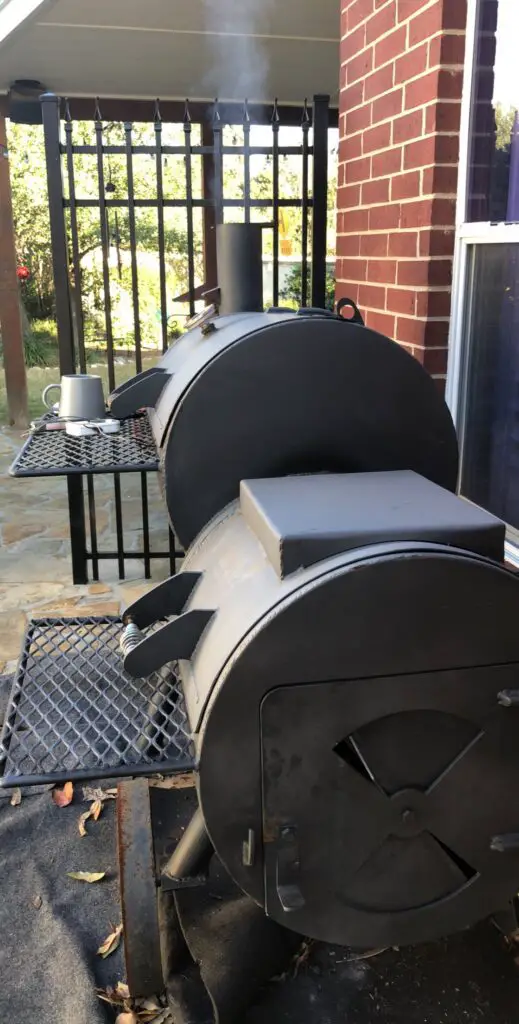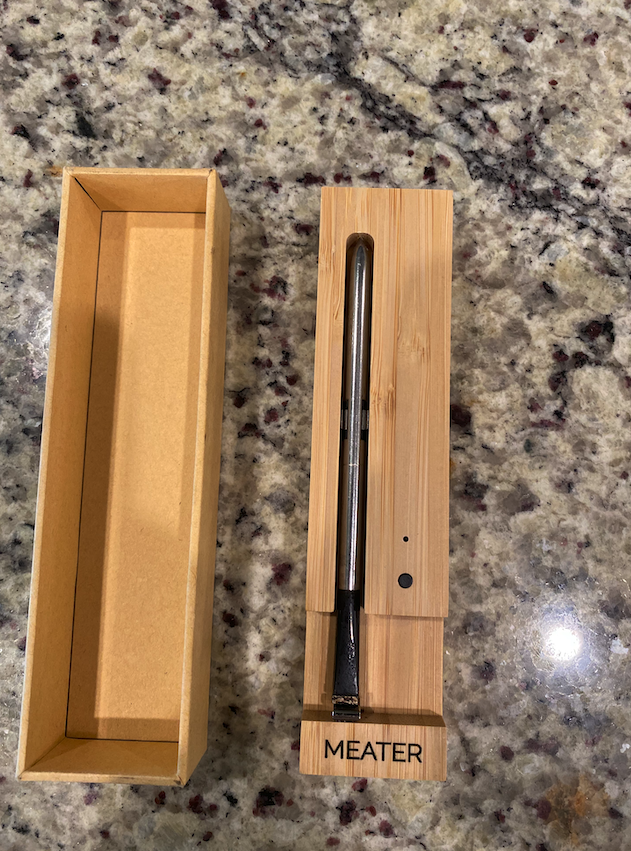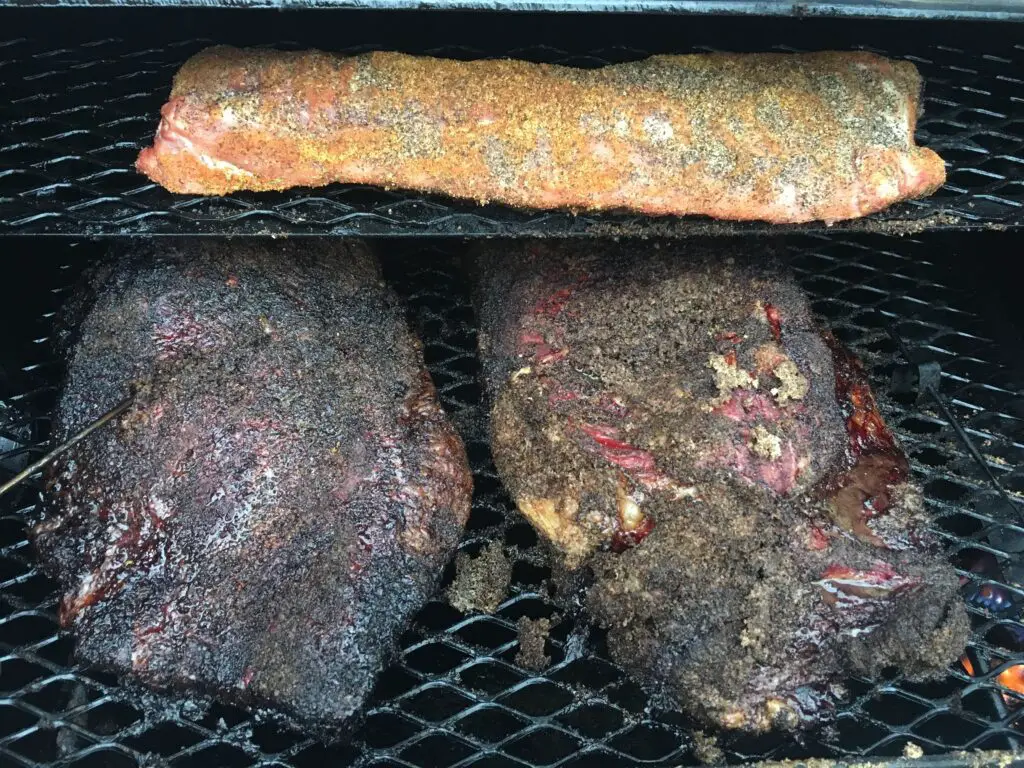We strive to provide you with authoritative, trustworthy, and expert advice. In doing so, the staff at bbqdropout.com performs extensive research, editing, and fact checking to every post on this webiste. If you feel that this article can improve, please feel free to reach us at staff@bbqdropout.com
Before continuing this article, I wanted to let you know that I have a YouTube channel where I showcase all sorts of video content related to BBQ. Subscribing would mean a lot to me, and I very much appreicate all the support!
It can be rather frightening to check on your brisket after it has been smoking for 5 hours and discover that its internal temperature has ceased to rise or has even plummeted.
The truth is that this is quite normal!
This is something that even the most seasoned smokers must contend with.
Temperature drops can be induced by a variety of circumstances, including bad weather, too much fat, or even a lack of smoking heat, or simply experiencing “the stall”.

Fortunately, these issues are common enough that professionals have devised various ways to help avoid and reduce this phenomenon.
What Causes the Temperature to Drop?

The Stall
A “stall” is something that happens to meats all the time when they are cooked at low temperatures for long periods of time.
It refers to the internal temperature literally halting and refusing to rise at a given point.
In some situations, the stall can cause the temperature to drop.
A process known as “Evaporative Cooling” causes the stall.
This is the point at which the broken-down tissues and fats begin to rise and excrete from the meat, evaporating at the surface.
This evaporation cools the meat at the same rate at which it cooks, causing it to stall, or plateau.
The stall usually occurs between 150 and 170 degrees(F).
This will last until all of the remaining juices have risen to the surface and dissipated.
After that, the brisket will continue to cook and heat up.
Not Enough Heat
This may appear to be a silly mistake, but it is a very prevalent one among new smokers.
If the ambient smoke temperature within the smoker isn’t hot enough, the stall will be significantly increased.
During the stall, the smoker will already be struggling to keep the temperature stable.
As a result, if the temperature isn’t high enough, it may actually decrease in interior temperature rather than breaking even.
Brisket is traditionally smoked at 225 degrees(F), however it can alternatively be done at 250 degrees(F) as well.
Tip: Before putting the meat in the smoker, make sure it’s completely preheated.
Also, make sure the lid closes tightly and securely to keep the heat in.
Using An Inaccurate Meat Thermometer
Before you even consider placing the brisket in the smoker, be sure your probe thermometer provides information with pinpoint accuracy.
Check the thermometer and ensure that the probing rod is clean and clear of char or gunk from other foods.
Any obstruction on the probing rod can cause the measurements to be drastically off.
This may cause you to overcook the brisket if you keep it on for too long.
Allowing Too Much Airflow
Proper airflow within a smoker is critical. It helps regulate the temperature within the smoker.
Too much airflow, on the other hand, might cause heat to be deflected away from the meat, causing it to stall or even fall in temperature.
This can also be an issue when smoking brisket on a windy day.
If this occurs, ensure that the smoker is facing the wind in such a way that it can still circulate the additional airflow via its vents, or face it away from the wind entirely.
Can This Be Prevented?

Using Wraps
This method, sometimes known as “The Texas Crutch,” is the most commonly used strategy for dealing with this situation.
This can be done with butcher paper or tin foil.
Remove the brisket from the smoker as soon as you notice it starting to stall or drop, wrap it snugly and securely, and return it to the smoker for the remainder of the cooking period.
The wrap will seal all of the moisture inside with the meat, causing it to dissipate much faster and minimizing the impacts of the stall.
Some smokers will not wait till the temperature has reached a plateau.
Instead, they will wrap the brisket as soon as the temperature rises to 150 degrees (F).
Increasing the Ambient Smoke Temperature
Although this is not encouraged, it can considerably reduce the effects of the stall or, in some cases, completely avoid it.
The typical temperature is between 225 and 250 degrees (F).
However, by raising the temperature to 275-300 degrees (F), the brisket has a better chance of avoiding the stall zone all together.
Go Light on the Basting
Basting a smoked pork shoulder is routine process. However, it is possible to over-baste.
Too much basting will add an excessive amount of moisture to the pork shoulder, causing it to stall and cool substantially.
Trimming The Brisket
Trimming the brisket before smoking it is an important step.
If the fat cap is not removed completely, it may contribute too much moisture during the stall, causing it to cool.
To mitigate this, do a half-trim and then flip the brisket halfway through the smoking.
This way, you can have the best of both worlds.
Can Brisket be Pulled from Smoker at 190*?
Brisket is ideally pulled from the smoker when the temperature is between 195 and 205 degrees (F).
The brisket has had plenty of opportunity to redistribute its juices within itself at this temperature.
If you remove the brisket before that time, it may not be as tender as it could be.
It can also make shredding tough if you’re going for pulled pork.
Carry-Over Cooking
When you remove thick slices of meat from the smoker, such as brisket, the meat continues to cook while resting.
Because briskets are thicker cuts, the meat maintains a lot of heat that is still cooking the brisket internally as it moves towards the centre.
Carry-over cooking can sometimes raise the internal temperature of pork by 10 degrees(F)!
Because of the effect of carry-over cooking, some smokers pull their briskets after they reach 190 degrees (F), relying on this effect to bring the meat to its required temperature.
Final Thoughts

As you can see, there are a variety of reasons why your brisket’s internal temperature may drop while smoking, some of which are beyond your control.
Even though this is a natural process, you have an arsenal of useful tactics and approaches at your disposal that will help mitigate, and in some cases completely avoid, losing internal heat when cooking.
Robert is a certified Pitmaster, with over a decade of experience in smoking the best meats you’ll ever feast upon. He also has a Bachelor of Business Administration from the University of Texas at San Antonio. When he’s not researching technical topics, he’s most likely barbecuing in his backyard.
